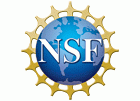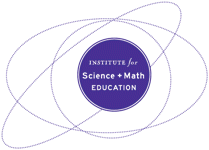Connecting science instruction to neighborhood life through collaborative design with community

- Teachers are well-positioned to engage families, students, and community experts in the collaborative design of meaningful science learning.
- District staff and PD providers should support collaborative design opportunities that center experiences and expertise of diverse community members. They should approach community as educational designers and leaders.
- School Leaders should support efforts to bridge school and community by providing time and space for such collaborations.
What is the Issue
Educators can find important ways to support students’ science learning in home and neighborhood contexts. This is an opportunity to expand ideas of where and how science is done and what knowledge relates to science. When educators design science learning in collaboration with community members, families, and students, they can give young people more expansive perspectives on who does science, how and where they do it, and how science relates to their lives and the flourishing of their communities. In these ways, education can be more accountable to community histories, interests, and expertise.
Authors:
BY SUSAN MEABH KELLY & PHILIP BELL
Reflection Questions
Where in your curriculum can you see points of intersection between school, home, and neighborhood learning?
How can existing school and community networks be leveraged in these efforts? (E.g., language instructional assistants often hold deep relationships with families.)
Things to Consider
- Soliciting and leveraging expertise from beyond the school campus helps us transform deeply entrenched ideas about where learning takes place and whose knowledge matters. In many schools, science has been historically presented as mono-cultural and disconnected from students’ lives. Science learning is a social process tied to place in which groups of people with complementary expertise work together.
- Teachers hold expertise in pedagogical strategies and are familiar with students’ past and future school-based science learning. Families engage in science-related pursuits and have deep knowledge of their children and how to support their engagement and achievement in science. Elder community members, regional resource managers, informal and cultural institutions, local nonprofits, and businesses are likely aware of past and anticipated community changes, which shape locally relevant science phenomena. Students have shared experiences that can help surface one another’s expertise and personal interests and identify connections for their future science learning.
Attending to Equity
- Single instructional solutions will not fit all contexts. Develop approaches tailored to your classroom and local community.
- Community demographics or established social networks may not be equitably represented in your current school-family initiatives. Solicit involvement of diverse community and family members to help avoid privileging advantaged groups.
- Families’ past experiences and relationships with science vary. By equitably soliciting, recognizing, and leveraging family funds of knowledge, teachers can help families see school science as more accessible and relevant.
- Learning should be guided by the value systems in different settings. Bridge, rather than impose, school values and associated practices as you collaborate with culturally and professionally diverse community members. A symmetrical exchange helps develop mutual trust and surfaces new insights, perspectives, and opportunities for learning.
Recommended Actions You Can Take
- Science education should bring together teachers, families, communities, and students to collaboratively design and implement activities for science learning: Activities hinging on the ways home, community, and science connect can facilitate engagement, learning outcomes, and development of science identities. Review this example.
- Focus on Community Assets Prior to Collaborative Design:
- Increase your familiarity with the history and context of your school community. Look for ways local development and environmental characteristics impact families, such as land use change or air quality.
- Gather a list of different occupations represented in your school community and consider ways these occupations practice science. Solicit students’ and family members’ insights to make these connections. Professional materials (e.g., license manuals, websites, handbooks) can help illuminate and communicate these connections.
- Consider ways science is commonly practiced at home, particularly those applications that relate to cultural thriving and innovation.
- Engage in Co-Design Practices: (a) Develop shared understanding of learning goals, (b) Share family perspectives, knowledge, and capacities that relate to those goals, (c) Brainstorm possible instructional approaches—first in a small group, then with all involved & refine, (d) Co-design and co-plan instruction—tapping relevant local expertise and settings, and (e) Reflect, analyze, and adjust throughout the process.
ALSO SEE STEM TEACHING TOOLS
STEM Teaching Tools content copyright 2014-22 UW Institute for Science + Math Education. All rights reserved.
This site is primarily funded by the National Science Foundation (NSF) through Award #1920249 (previously through Awards #1238253 and #1854059). Opinions expressed are not those of any funding agency.
Work is licensed under a Creative Commons Attribution-ShareAlike 4.0 Unported License. Others may adapt with attribution. Funded by the National Science Foundation (NSF). Opinions expressed are not those of any funding agency.


 Email Feedback
Email Feedback

